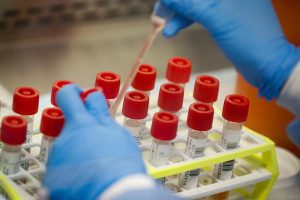Vaccine-Derived Poliovirus (VDPV) Detected In The Environmental Surveillance Of Sewage Samples:

Vaccine-Derived Poliovirus (VDPV) was detected in the environmental surveillance of sewage samples from Kolkata, Bengal.
- Most likely it has come from someone’s gut who is immune deficient and has since multiplied. It is not a case of human-to-human polio transfer.
- A VDPV is a strain of the weakened poliovirus that was initially included in OPV (Oral poliovirus vaccines) and that has changed over time and behaves more like the wild or naturally occurring virus.
- Polio is a crippling and potentially deadly viral infectious disease that affects the nervous system.
- There are three individual and immunologically distinct wild poliovirus strains:
- Wild Poliovirus type 1 (WPV1)
- Wild Poliovirus type 2 (WPV2)
- Wild Poliovirus type 3 (WPV3)
- Symptomatically, all three strains are identical, in that they cause irreversible paralysis or even death.
- However, there are genetic and virological differences, which make these three strains separate viruses which must each be eradicated individually.
- The virus is transmitted by person-to-person mainly through the faecal-oral route or, less frequently, by a common vehicle (for example, through contaminated water or food).
- It largely affects children under 5 years of age. The virus multiplies in the intestine, from where it can invade the nervous system and can cause paralysis.
- Most people with polio do not feel sick. Some people have only minor symptoms, such as fever, tiredness, nausea, headache, pain in the arms and legs, etc.
- In rare cases, polio infection causes permanent loss of muscle function (paralysis).
- Polio can be fatal if the muscles used for breathing are paralysed or if there is an infection of the brain.
- There is no cure, but it can be prevented through Immunisation.
- Vaccines:
- Oral Polio Vaccine (OPV): It is given orally as a birth dose for institutional deliveries, then primary three doses at 6, 10 and 14 weeks and one booster dose at 16-24 months of age.
- Injectable Polio Vaccine (IPV): It is introduced as an additional dose along with the 3rd dose of DPT (Diphtheria, Pertussis and Tetanus) under the Universal Immunisation Programme (UIP).




